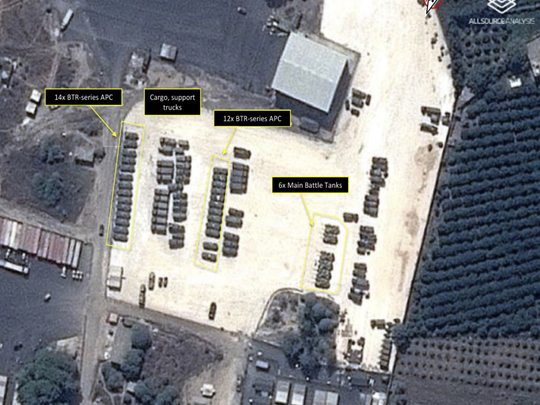
Russia is conducting a series of massive military exercises with live ammunition in the Mediterranean Sea between the Syrian port of Tartus and the island of Cyprus. Aircraft-carriers and missile units are involved in the exercise, thereby confirming Moscow’s commitment to support the Syrian regime led by President Bashar Al Assad.
Russia had announced, several days earlier, that it would supply arms and ammunition to Syria so as to enhance its military capabilities to take on Daesh (the self-proclaimed Islamic State of Iraq and the Levant) after it announced war against this organisation.
At the official level, Russia described its manoeuvres as routine, but it is difficult for any political analyst to be satisfied with the excuse that these are mere routine manoeuvres in isolation from the current tensions in Syria and in Iraq and in isolation from the general instability in the whole region.
The term “warfare manoeuvre” is commonly used in military parlance to describe the movement of the military on the ground, in sea or in the air along with logistics related to the administrative, technical and intelligence aspects of the armed forces. However, on the other hand, manoeuvres are also a media and marketing display for the performance of weapons on the ground, in line with the combat doctrine, whereby, military experts and commanders take the front seats during such manoeuvres.
Military manoeuvre is an application of a real-war scenario with the exception of one aspect — the actual enemy. It involves almost the same cost as that of an actual war, except for the fact that it does not involve any loss of human life. Such drills are expensive, especially when they involve frigates, aircraft-carriers, missile units and fighter planes. For example, the cost of operating an F-16 jet for an hour is $23,000 (Dh84,594).
In recent times, Russia has conducted several joint exercises with friendly countries such as China and Egypt in the Mediterranean. However, the aims of those manoeuvres were very different from the current one. Egypt, for instance, did not need the protection of Russian forces when the manoeuvres were being conducted — unlike the current predicament of the Syrian regime that is facing a huge challenge to maintain cohesion in the face of many opposition factions seeking to overthrow it.
The current Russian manoeuvre is seen by western observers as a qualitative shift in Moscow’s position on the Syrian crisis and a quantum leap in Russia’s role in the region as well. Some or all Russian troops taking part in the manoeuvres may never return to their original positions, but will remain in Syria to carry out ‘other tasks’. Thus these manoeuvres may well be a cover for Moscow to bring its troops into Syrian territory, especially in view of the construction of a new air base near Latakia with a wide runway for fighter planes.
As Russia places its military in Syrian territory, it is reassuring Syria and enhancing its negotiating powers with the West.
Meanwhile, Russia is also expanding its military presence in the Mediterranean, since the West, led by the United States, is reluctant to lead ground forces into Syria as long as President Barack Obama remains in the White House.
It will perhaps not be an exaggeration to say that it is difficult to count the number of manoeuvres that take place around the world each year because of the diversity of the objectives that lie behind them. Through these drills, Russia has reassured the Syrian regime and strengthened its navy’s strategy to expand deployment in the Mediterranean, which is an area of western influence, overlooking the northern European Union countries, mostly under Nato.
Recently, Russian marines have adopted a new strategy based on the doctrine of spreading one’s influence beyond the geographically adjacent seas, such as the Baltic and the Black Sea, to gain access to warm waters — as is the case with the US Navy. Manoeuvring fleets in high seas has always been a game with big powers. During the Cold War era, Moscow had dozens of warships patrolling the waters of the Mediterranean on a permanent basis. It was compelled to pull this fleet out in 1992, a year after the collapse of the former Soviet Union and the decline in its political clout.
However, since the end of 2011, Russia has reinstated its former strategy, which is to have a permanent presence in these waters. There is a strong naval force of ten ships belonging to the fleets of the Black, the Baltic and the North Seas that have been formed for this purpose under the leadership of the Russian Black Sea Fleet. It is of modest size in comparison to the US Sixth Fleet located in this area, which includes 40 ships and nearly 200 aircraft and more than 20,000 Marines.
Russia’s eagerness for a permanent presence in the Mediterranean Sea is the key factor behind attaching the Crimean peninsula to the Russian Federation to ensure the survival of the port of Saostbol, the headquarters of the Black Sea Fleet, under Russian domination. And it is through this port that Russia can perpetuate the presence of its forces in the Mediterranean.
Mohammad Akef Jamal is an Iraqi writer based in Dubai.








